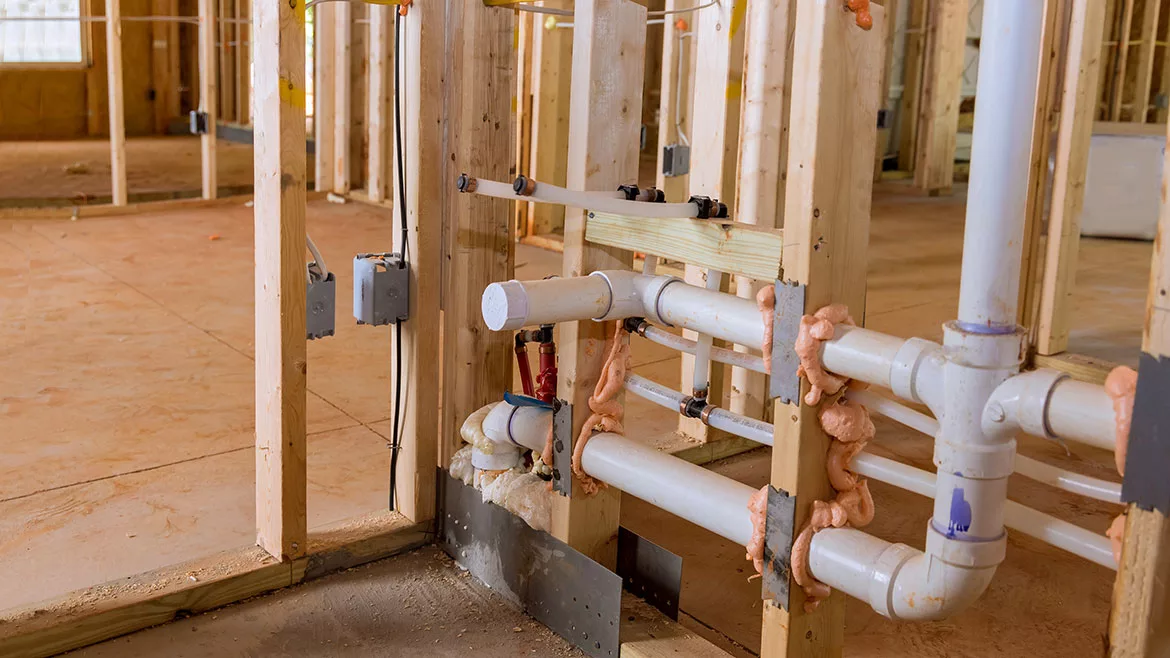California homebuilder leads the way as early adopter of IAPMO’s Water Demand Calculator
Villara has been utilizing tool to enable right-sizing of water pipes in more than 5,000 single-family homes.

Image courtesy of photovs / iStock / Getty Images Plus
Appendix M of IAPMO’s Uniform Plumbing Code (UPC), otherwise known as the Water Demand Calculator, official became part of the California Plumbing Code on July 1, providing an alternative methodology for estimating peak supply demand to enable right-sizing water pipes in single- and multi-family buildings.
This may initiate big changes for some, but for one of the nation’s largest plumbing and HVAC contractors, it will be business as usual.
Based in Northern California, Villara Corp. has been using the Water Demand Calculator for more than five years. More than 5,000 single-family homes have been built using its calculations.
"The majority of where we’re using Appendix M is on our single-family residential new construction, where there are certain pricing pressures in order to win the job," says Robert Campbell Sr., director of multi-family/commercial operations for Villara’s plumbing and HVAC divisions. "As interest rates go up, those pricing pressures become greater."
In 2017, plumbing engineering consultant Gary Klein chaired a technical advisory committee for the California Energy Commission study investigating strategies to improve hot water delivery quality in single-family homes to reduce energy and water waste.
Campbell was a member of that committee, which included Pete DeMarco, IAPMO’s executive vice president of Advocacy and Research at the time. Intrigued, Campbell brought news of the Water Demand Calculator back to Villara.
Villara Plumbing Design Supervisor Amanda Johnson said the Water Demand Calculator piqued their interest because it took low-flow fixtures and probability of use into account as compared to the combination of the UPC’s Chapter 6, Water Supply and Distribution, and Appendix A, Recommended Rules for Sizing the Water Supply System. She said using Chapter 6 and Appendix A would often leave them wondering if the pipes were larger than necessary.

"Finding a better, more economical, more realistic way to size was definitely interesting to me," she says. "We’ve always complained about how in California, the code seems to lag behind what we’re doing, so if there’s something new and improved, taking efficiencies into account, we always want to go in that direction."
Villara began using the Water Demand Calculator to help determine pipe sizing on city submittals for single-family homes and met little resistance since it was part of the UPC, on which the California Plumbing Code is based.
"A lot of cities have accepted it and we really haven’t had issues with inspectors being concerned once installed," she says. "We haven’t had negative customer feedback that I’m aware of."
First published as Appendix C in the Water Efficiency and Sanitation Standard (WE•Stand) in 2017, the Water Demand Calculator became part of the UPC in 2018 as Appendix M.
The Water Demand Calculator addresses water quality issues attributed to lower flows in oversized premise plumbing while simultaneously using less water and energy, representing the most impactful innovation in pipe sizing in nearly a century. It is the result of a multiyear effort to develop a new statistically based pipe sizing method stemming from a need to address profound water safety and wasted water and energy concerns resulting from oversized water supply pipes in homes and buildings.
California becomes the 10th state to adopt Appendix M into its codes and standards, joining Hawaii, Montana, Nevada, New Jersey, New Mexico, North Dakota, Oregon, Washington and Wisconsin, as well as such major cities as Houston, San Jose, Seattle and Vancouver, British Columbia.
Johnson said Villara has seen a noticeable difference in terms of pipe sizing when it comes to medium- to high-pressure areas.
"You can get a lot more on a half-inch line, especially (factoring in) the probability of use and how it calculates out," she says. "The cost savings with installation and smaller pipes are nice when you go to lower pressure areas."
Johnson notes that her team has become adept at interpolating the information gleaned from the Water Demand Calculator into Appendix A to determine more appropriate pipe sizing.

"Having something that gives us the gallons per minute, that we can then use the calculator in a quick and efficient way with the volume that we do, has been very helpful," she says.
While most of Villara’s Water Demand Calculator use has been for new single-family homes, one adaptive reuse multi-family project that successfully utilized the technology stands out.
Several years ago, during a project in which an apartment building was being renovated, the owner wanted to add automatic washing machines to all 120 units, for which the system was not originally sized.
"We were able to prove to the city that using Appendix M, with all the water reduction laws that have come over time, would allow us to add those washers without any upsizing of mains," Campbell says.
Given their use and familiarity with the Water Demand Calculator, Johnson recommends contractors and builders explore using the tool, particularly for single-family homes that have showers as opposed to combination tub/showers. There is a large jump in pipe sizing if there are multiple combination tub/showers, she said, but not nearly as much if they opt to only have one.
Campbell says another advantage comes when sizing pipes for hot water.
"If we can reduce the supply pipes going to fixtures, we’re going to waste a lot less water waiting for hot water back to the master bathroom," he says. "For example, the larger the pipe size from the water heater to that back bathroom, the more cold water you have to displace before you get hot water. So, using Appendix M, if we can reduce the pipe size, we’re wasting a lot less water."
Campbell says Villara’s clients trust them when it comes to how they determine pipe sizing.
"Our customers really don’t care how we get it done as long as we get it done for a certain budget," he says. "So, where Appendix M can make a difference, we’re able to use it and reduce our overall cost, which then we can pass on to the builder in order to win the work and stay competitive, most importantly."
Looking for a reprint of this article?
From high-res PDFs to custom plaques, order your copy today!







